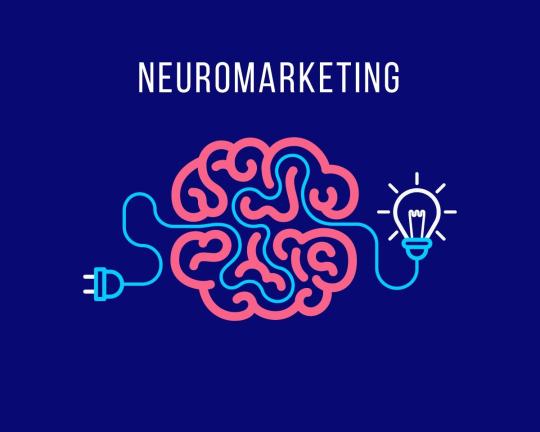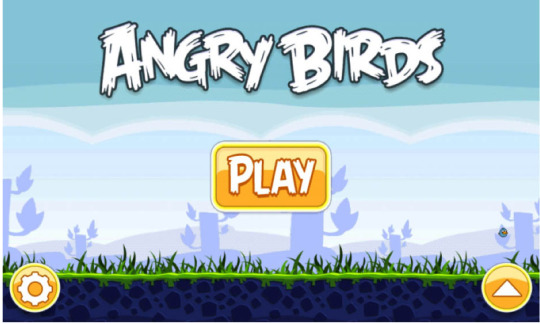Photo

Utilizing Neuromarketing in Social Media
Neuromarketing is a valuable tool used in social media that uses stimuli like design, color, packaging of a product, the header of an email, or other marketing elements to trigger brain responses (Dimitrakis, 2020). There are four principals of neuromarketing that businesses apply to their ad campaigns to retain existing customers and to acquire new ones:
1. Scarcity – Marketers use the concept of scarcity to relay to their target audience that their supply is limited. Thus triggering fear of missing out and losing something that causes a strong desire to gain something (Dimitrakis, 2020). Common uses of scarcity are limited-edition “drops” by retailers like Supreme and Yeezy.
2. The Psychology of Habit – Creating repetition is an important factor to your product or content becoming a “habit” (Dimitrakis, 2020). Subscription services and YouTube stars are popular examples of creating a habit for your audience. Also, repetitive games also create a habit within their users and further increase engagement and usage.
3. Triggering Emotions – Emotional content has grown in popularity as consumers respond to and relate to it on a personal level. Content that triggers strong emotions are more likely to be remembered and engaged with. Triggering strong emotions from you audience increases brand recognition and connection. Studies show that people are more strongly influenced by an emotional trigger than any other factor (Agarwal, 2020).
4. Social Proof – The concept that if others around you are doing something then you are more likely to also. People are reluctant to try new things unless they have a social proof that it will be beneficial for them (Agarwal, 2020). Testimonials are a common example of social proof as consumers see others they can relate to promoting a product.
Examples of Neuromarketing
1. Scarcity – Starbucks used the concept of scarcity in their new Unicorn Frappuccino advertising to create a buzz. Through the use of limited-time-offers, Starbucks inspires feelings of FOMO and exclusivity (Bernazzani, 2017). Coffee drinkers and Instagram fiends alike flocked to the participating locations to get their hands on the limited supply and to post the highly “Instagrammable” drink. Further increasing Starbuck’s advertising campaign reach for the Unicorn Frappuccino.
https://www.instagram.com/p/BTEWcNHjACU/?utm_source=ig_web_copy_link

2. Creating a Habit – This is seen a lot in gaming apps like Angry Birds. The habitual game play is based on the video games core loop. You have to complete the challenge in order to win a reward and that repeats throughout the game. Adrenaline is released while playing and competing to win, and dopamine is released upon receiving the reward for succeeding (Agarwal 2020).

3. Triggering Emotions – Airbnb utilized the neuromarketing strategy of triggering an emotional response from its targeted clientele in order to create a personal connection to their brand. Airbnb created an emotional video of one of their hosts, Carol Williams as one of their first ad campaigns with the slogan: “New Yorkers Agree: Airbnb is great for New York City”. The brand used Carol’s story of how she uses Airbnb to help her survive the financial struggles she has faced since the passing of her husband. This video instilled strong feelings of hope, unity and hospitality, just as the brand intended (Agarwal 2020).
https://youtu.be/TniQ40KeQhY
4. Social Proof – Nature Made uses social proof and “herd behavior” to push their gummy vitamin sales. The ad they ran for their product includes that the USP has vouched for their “purity and potency” creating the concept of social proof that this product will be beneficial since it already has support from others.

Another concept of neuromarketing that I have not discussed is the usage of “sleep nudging”. This is something that I personally have been a victim to as studies show that consumers are more susceptible to be influenced to buy during sleep windows (Dimitrakis, 2020). Late night social media usage can affect sleep quality, impulse buying and FOMO. It is important to keep up with the tactics being used in social media advertising as neuromarketing is utilized more and more. Neuromarketing is a powerful tool to sell products, influence people and manipulate emotions and being aware of these concepts is crucial for avid social media users.
References:
Dimitrakis, T. (2020, December 11). Neuromarketing: A Complete Guide with Principles, Examples, and Techniques. NoGood. https://nogood.io/2020/10/09/neuromarketing examples-techniques/
Agarwal, I. (2020, October 3). Neuromarketing: 6 Examples of Brands Using Psychology in Social Media Marketing! Relevance. https://www.relevance.com/neuromarketing-6-examples-of-brands-using-psychology-in-social-media-marketing/
Bernazzani, S. (2017, April 19). The Scarcity Principle: How 8 Brands Created High Demand. HubSpot. https://blog.hubspot.com/marketing/the-scarcity-principle
0 notes
Photo

Isolation in Social Media and How We Can Prevent It
Social Connection via Social Media
Social media has been designed to bring people together and create a platform for community, togetherness and connection. Users of social media platforms often join social support groups, follow pages and people they are interested in and can relate to, and use these online forums to find other like minded users to connect with. Social media platforms further promote homophily among their users by designing algorithms to keep specifically targeted content at the top of our news feeds. For more information on how algorithms promote homophily follow the link:
https://cambriajoy.tumblr.com/post/641311070878941184/cultivating-online-communities-personal
Homophily Causing Isolation in Social Media
Social media algorithms and cognitive biases further homophily as users only are being shown and exposed to content that they agree with, relate to and share similar interests. Homophily, on the surface, can seem like a positive concept but when only exposed to content and people who share the same beliefs as you it can lead to isolation and narrow mindedness (Bessi, et al. 2016). Cognitive biases are then confirmed in the minds of the users as they become firmer in their beliefs and less open minded and open to hearing other differing opinions that don’t coincide with their own. Illusory truth effect is another contributing factor to isolation. Illusory truth effect is a common phenomenon in social media as users tend to accept information they read as truth is it is easy to understand and seen spread around many times. This can spread misinformation and “fake news” in social media. This level of isolation as people becoming more and more firm in their opinions and spread misinformation can lead to cyber-bullying of those who disagree, and political extremism (Parnell, 2017).
Ways to Prevent Isolation in Social Media
As users of social media, it is up to us to use it responsively and with critical thinking. Only following pages and people who align with your personal beliefs does not help us grow in our thinking or perspectives. This is why it is important to follow and interact with other users who are diverse and have different opinions and perspectives than ourselves. This helps us keep an open mind and lessen the effects of homophily promoted by social media platform algorithms (Be Inspired, 2018). Another important way to combat isolation on social media is to use critical thinking and fact checking. The spread of misinformation on social media is at an astonishing rate. Fact checking before forming opinions and further circulating information is exceptionally crucial now more than ever. Especially when it comes to important health, political and safety information.
References:
Be Inspired. (2018, June 28). Before you scroll down watch this! [Video file]. | Transcript. Retrieved from https://youtu.be/1IW3y3x6o_g.
Bessi, A., Zollo, F., Vicario, M. D., Puliga, M., Scala, A., Caldarelli, G., Quattrochiocchi, W. (2016). Users polarization on Facebook and YouTube.PLoS, 11(8), 1–24.
Parnell, B. (2017, June 22). Is social media hurting your mental health? [Video file]. | Transcript. Retrieved from https://youtu.be/Czg_9C7gw0o
0 notes
Photo

Cultivating Online Communities
Personal Connection through Social Media
The most highly endorsed motivation for using social media include social interaction and passing the time according to Tobin & Chulpaiboon (2016). When attempting to understand people’s engagement on social media, we often look at the personal gratification being sought after. Personal connection is often a primary motivation for people who are lonely and isolated or simply wish to expand their social circle.
Personal connection can be achieved through social media by finding groups and/or other like-minded individuals who have similar outlooks or are going through a similar life situation. For example, I am in the middle of planning a wedding during a pandemic. This is a very specific predicament that I am in and I have been able to link up with other people in the same situation, only through the use of social media.
Homophily in Social Media
Homophily means “love of the same". Which, when applied to social media, relates to how we use these platforms to find others we can identify with. These kinds of connections are important to use because it fuels our feelings of belonging and fitting in. The personal connections we create on social media fosters a culture of openness, sharing and trust, according to Scheinbaum (2017). The more we share and learn about each others’ lives, outlooks, opinions, hopes, and fears, and the more we can connect and feel understood. As well as make others feel understood and encourages a sense of community.
Algorithms promoting Homophily
Algorithms also encourage and even enhance our ability to find and connect with other like-minded and similar users. As we ‘like’, ‘share’ or ‘comment’ on content we connect with, the algorithm on these social platforms will begin to promote similar content in ad spaces on Facebook, Instagram, Twitter etc. and on the explore page on Instagram.
The explore page on Instagram is a big example of how algorithms promote homophily. When looking through the explore page, you will find content similar to yours, relevant to searches you’ve conducted, pages you follow and content you’ve engaged with. This further promotes homophily amongst social media users as it connects people with similarities and aids in the cultivation of online communities.
References
Tobin, S. J., & Chulpaiboon, P. (2016). The role of social connection in satisfaction with Instagram photographs. Translational Issues in Psychological Science, 2(3), 303–312.
Scheinbaum, A. (Ed.). (2017). The dark side of social media: A consumer psychology perspective. New York, NY: Routledge.
0 notes
Photo

How to Increase YOUR engagement with these simple steps:
Capturing Attention in Social Media
In order to captivate your audience, you need three things:
1. A clever caption (bonus points if you add a unique question to increase engagement)
2. An attention grabbing image (usually something with bright colors or visually aesthetic)
3. A consistent brand. In order to gain a loyal following, you need to figure out what your brand is and stay true to it. People who are interested in your brand will keep following and engaging as long as you are still posting about what made them follow you in the first place.
It is important to capture attention from your followers if you wish to increase engagement on your posts. This can be challenging since another factor to consider is posting often (at least once a day). Keeping to a consistent posting schedule can be difficult especially considering that you want to keep your content of high quality.
Maintaining Engagement in Social Media
1. Keep posts relevant to current events
2. Post on a regular schedule (aim for one post a day)
3. Keep posts fresh by including new topics of interest
Maintaining engagement is one of the hardest parts of having a successful page. Remaining true to your brand while also adding new topics of interest and creating fresh content is a challenge. A good way to get a feel for what your followers want to see is by posting different types of content and seeing if your followers are more or less engaged by tracking likes, follows, and shares.
References
Chen, J. (2020, May 18). How to improve your social media engagement. Sprout Social. https://sproutsocial.com/insights/social-media-engagement/
1 note
·
View note